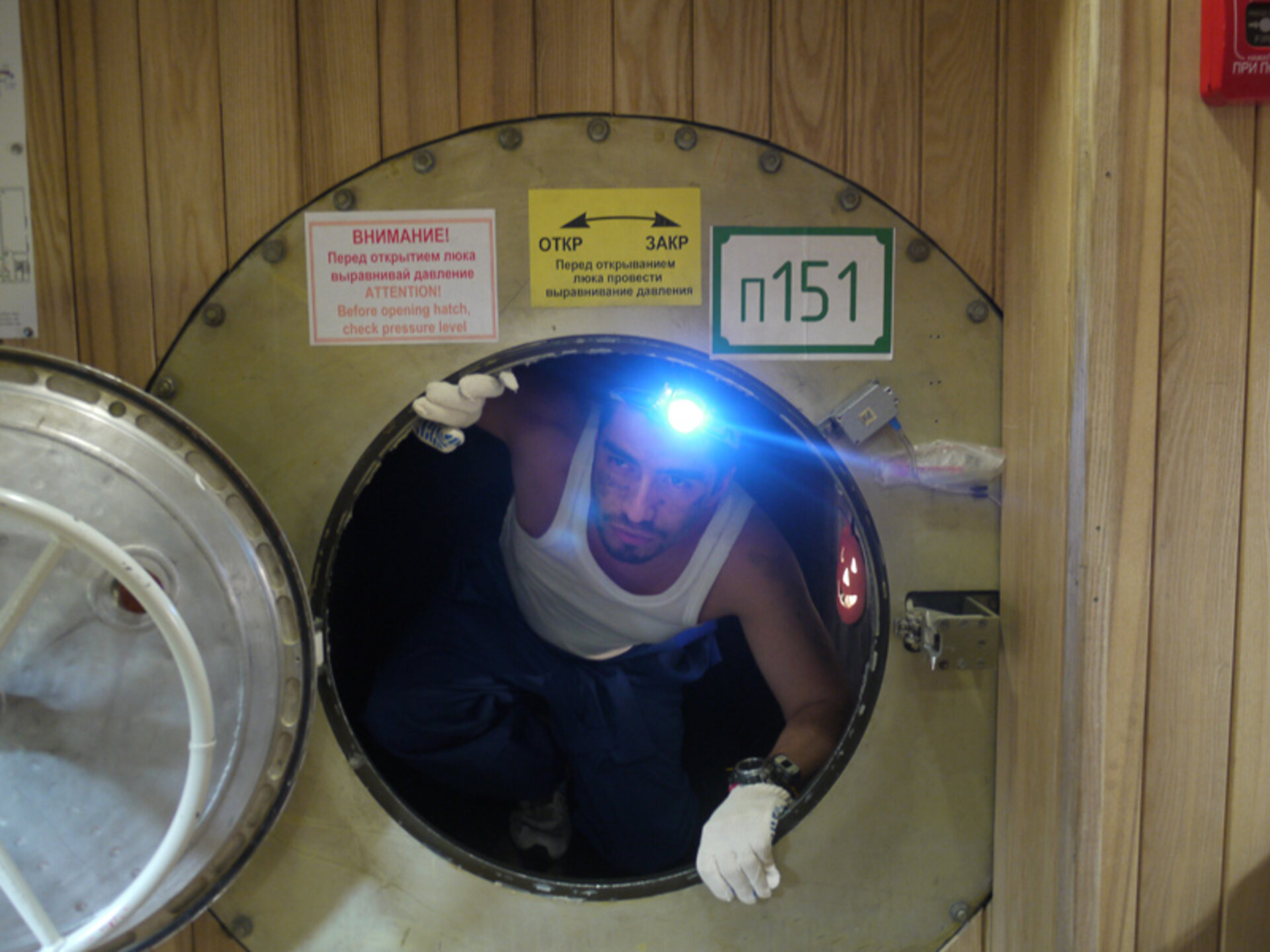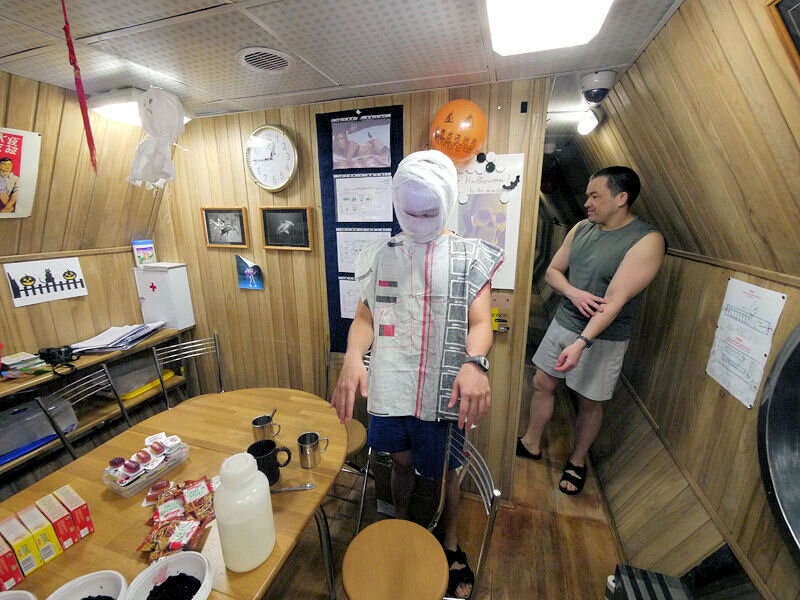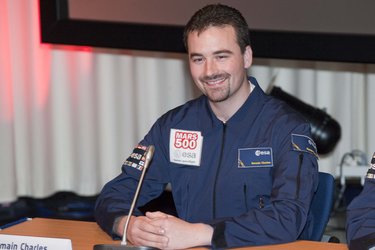“Are we alone?”
In his latest diary update, Diego explains the daily routine with a European experiment they are conducting inside the Mars500 modules, and also shows his Halloween photos, prompting the question: “Are we alone?”
As the days get longer and more monotonous in the Mars500 modules, we get more time to think about the conditions that surround us. One of the questions that crosses our minds from time to time is: "are we alone?" I am not talking about tortured souls that haunt the storage module on Halloween, or about life beyond Earth (the latter being a fascinating topic by itself), but about other actual living beings that might share this space with us, without us noticing.

During the mission we grow plants for their ornamental value and for the food they can provide, so these are the more obvious life forms living beside us. In other isolation experiments, individuals reported having a growing appreciation of any living being they encounter, for instance, a spider or a fly can trigger profound emotions in people! The way the Mars500 modules are built, the chances are we will never encounter visible insects or similar, and believe me, every once in a while we used to try to look around for them, but with no success.
The reason is that the large cylinders that host us (by the way, they are shaped like this because they should be able to fit in a gigantic rocket) are pressurised at a level above that of the atmosphere outside. This is an old trick that is also used in the factories that make the chips in your computer, places that need to be free from contaminants (or for that matter bugs). In this way, if there is a small leak or a crack where little nasty elements could enter, the air flows outwards and not inwards, keeping the internal environment clean.
But being completely isolated from the outside does not guarantee that there are no other living beings with us. As always, where there is a human, there are tiny colonies of creatures that build up their ‘societies’ under our noses while we, unaware, mind our own business. They are born, reproduce and crawl, swim, tumble or simply stay attached to the wall in front of me as I write this diary.

Some are relatively ‘big’, such the not-so-handsome dust mite (you can google the pictures, we can't!) that so many mums worry about because it grows in the omnipresent dust and can cause allergic reactions in their children. In order to keep its levels low and avoid any trouble, the life-support system keeps the humidity under 50%, a level that takes care of most of these unwelcome companions. Plus we do a lot of cleaning.
Enter the world of even smaller (and harder to control) creatures, the world's tiniest astronauts: microbes. For years they have been piggybacking on rockets that blast from our Earth into space. During all the time that Man has been travelling to the vastness of space, in Skylab (US), MIR (Russia) and the International Space Station, about 250 species of bacteria and microfungi have been discovered chilling out in zero-g. If this is a good indication, we may have a number close to that in our 500-day home. As this is a great opportunity to study them, European scientists have joined forces under the ESA - DLR MICHA experiment programme. They seek to analyse samples from the walls and air of our mock spaceship. Every once in a while, we go around with swabs and a special vacuum cleaner to collect them so they can analyse and count them in their labs.

Some of these microbes are called technophiles (technology lovers) and, you guessed right, that is not because they keep buying the latest iPhone, but because they actually seem to enjoy living mostly on microchips and technological materials that spaceships are made of.
There is a wall in the gym module, a place with lots of humidity (many of these creatures love humidity), that has many metal plates, each with different coatings that should repel these minuscule ‘monsters’. They test all of them, so that on a future trip to Mars, scientists know what to paint the walls with, so that no microbes will decide to live and raise their small-scaled families on them.
Another part of this experiment seeks to actually enhance the microflora that lives in our viscera (yes, also in yours!), which are actually helpful to our digestive functions, those of the astronauts that will travel to Mars, and of people on Earth. We take some morning pills every once in a while for that purpose.
But why bother so much about these little bugs? Well, take just one of many reasons - the hypothetical case of finding life on Mars. It will most likely be microscopic life. What if one of the families of bacteria interacts with and kills the possibly most impressive discovery in human history? What if the opposite happens and we end up carrying with us to Earth a Martian microbe that can interact badly with our delicate Earth environment? These are situations that need a technological answer to prevent them from happening. So we must know what these little fellows are up to.

Now a few words about us – what we, the grownups, are up to. We recently passed the milestone halfway to simulated Mars and see that the date of arrival to the Red Planet gets closer and closer! The crew morale is good, even though we have entered a short period of one month in which we don’t have scheduled exercise (we love our exercise).
The day I write this is Halloween, and we prepared some wall decorations, the most improvised costumes, some horror movies, and little sweet gummy bears. Some of us kept the costumes on all day, even while we worked on our usual science and housekeeping tasks, which must have been quite strange to the fellows that monitor us through the omnipresent video cameras 24/7. It was fun.







